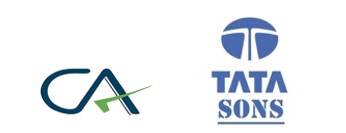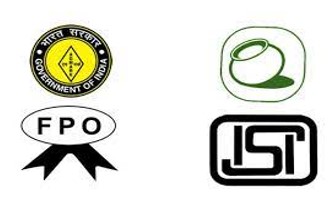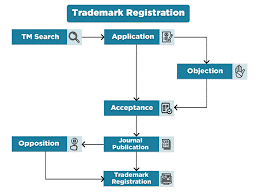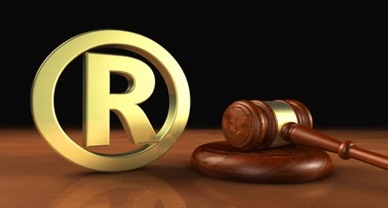Stratergising Trademarks
The word trademark is a culmination of two words, i.e., ‘trade’ and ‘mark’. Commonly trade is understood as any business in which the person specifically deals. And mark is nothing but a sign or symbol. Thus, to simply put, when the two words are read together, the meaning of ‘trademark’ comes out as- a sign or symbol used in the course of business by a person. Definition of ‘trademark’ is provided under Section 2(1)(zb) of the Trademarks Act, 1999 (hereinafter the Act), which gives the owner of such marks certain exclusive rights. As per the statute trademark means-
“a mark capable of being represented graphically and which is capable of distinguishing the goods or services of one person from those of others and may include shape of goods, their packaging and combination of colours;….”
Relevant to note from the above definition is that the mark should be capable of being graphically represented and most importantly, it should be able to distinguish the products or services of one entity from that of other.
CATEGORIES OF TRADEMARKS:
Listed below are some broad types under which the trademark can be registered:
Word mark-
A word, combination of words or such which have the ability to distinguish from that of owner’s with any other party (words/letters/numerals/slogans/taglines) for any goods or services. If a word mark is used on a product for goods it becomes product mark. Words like- KFC, IBM etc & taglines like- ‘just do it’, ‘I’m loving it’ etc.

These are basically the logos, combinations of words and logos, pictures or drawings. For instance-

A song or tune or any musical composition which is specifically used for identification of a particular product. For instance- Nokia’s welcome tune, I’m loving it jingle etc.
Collective mark-
A mark used by a group of companies or any other association which can shield the group collectively is called a collective mark. For instance- CPA (Certified Public Accountants), TATA Sons etc.

Simply, they are used to entail and guarantee the prescribed standards. For example- ISI, ISO etc.

When a product has distinct feature and shape then a shape mark is granted. For example- KitKat chocolate, Coca-Cola bottle etc.
NEED & BENEFITS OF REGISTERING TRADEMARK:
As seen above trademark registration can be granted for words, logos, slogans, devices and more in India. Question which arises at this stage is why the registration is required at all if there are common law defenses available, answer to which will be discussed as we move.
- It is an asset.
- It is cost effective
- Valid for 10 years
- It can be enforced against company name
- Protects investment in advertising & branding
- Protects against unfair competition
- Protects against infringement
- Right in perpetuity
REGISTRATION PROCESS:
Now, that it is ascertained what is the kind of trademark which needs registration the entire process becomes a little easier. Few simple steps, and boom your trademark is registered.
STEP 1: Trademark Search
Many trademarks related matters will not reach courts if the very basic step of searching for previously existing similar trademarks is correctly done. This step provides a fair scenario about the actual standing of your trademark. In case, the mark for which you want registration is already existing in the register of trademarks, exactly or even if closely similar then at this step only it will be known to you, thus, this step also acts as a warning.
STEP 2: Filing Trademark Application
Once it is confirmed that the mark which is sought for registration is not already existing in the registry of trademark, the same is a good go for registration. At this point, the application should contain the trademark, name and address of the trademark owner, classification, date or duration of usage and the description relating to the goods or services. These days mostly filings are done online. Form TM-1 will be used for fulfilling this step, if it is a collective mark then Form TM-3 will be used. There are cases when one trademark is to be registered under different classes, then Form TM-51 will be used. Under any circumstance, when the filing of the trademark is not done in accordance with law it shall be objected either by the registry or any other interested party.
STEP 3: Examination
Whenever an application is filed examination of same becomes inevitable. The application is examined for lacunas, the entire process of which takes span of approximately 12-18 months. It is at the discretion of the examiner to accept the application completely, partially or object to it.
If at the first instance, the examiner accepts the application absolutely without any modification, the trademark then gets published in the Trademark Journal. In case, the examiner accepts the application but with alterations and modifications then, an examination report will be formed listing the objections and a period of one month will be given to fulfil these conditions.
Now if the applicant’s response is filed in the stipulated time and is accepted by the examiner, the trademark will be published in the journal but if the response is not accepted then applicant can request for a hearing. Again, it is the discretion of examiner to allow or reject the hearing as well as the trademark.
STEP 4: Publication
It is only fair to provide an opportunity to those who have already filed or registered a similar trademark to object or oppose the same. Usually, after 3-4 months are passed after publication of trademark in the journal, it is deemed that if no objection comes in that span, the registration process can be furthered. But in case there comes an opposition from someone, a fair hearing is conducted followed by the decision of the Registrar.
STEP 5: Registration Certificate
Once the above-mentioned steps are completed in accordance with law, then the trademark to which registration is to be granted is issued with a certificate. This registration certificate bears the seal of the Trademark Office, and it works as a legal document in a court of law to prove that a valid trademark exists for same. After issuance of this certificate, the applicant or owner can use “â”.
STEP 6: Renewal
Initial term of protection for trademark is 10 years subject to perpetual renovation after every 10 years. Once the trademark is registered it gives the owner or authorized user to use that trademark in perpetuity.
CONCLUSION:
To summarize, it can be stated that trademark filing is not a very cumbersome process unless the steps are followed vigilantly and after registration once done gives lifetime rewards to the owner of the trademark, thus, it is nothing but a win-win deal.
Author:Upasna Rana – a studnet of LLM (IIT Kharagpur) and intern at IP And Legal Filings, in case of any queries please write back us via email at support@ipandlegalfilings.com.





